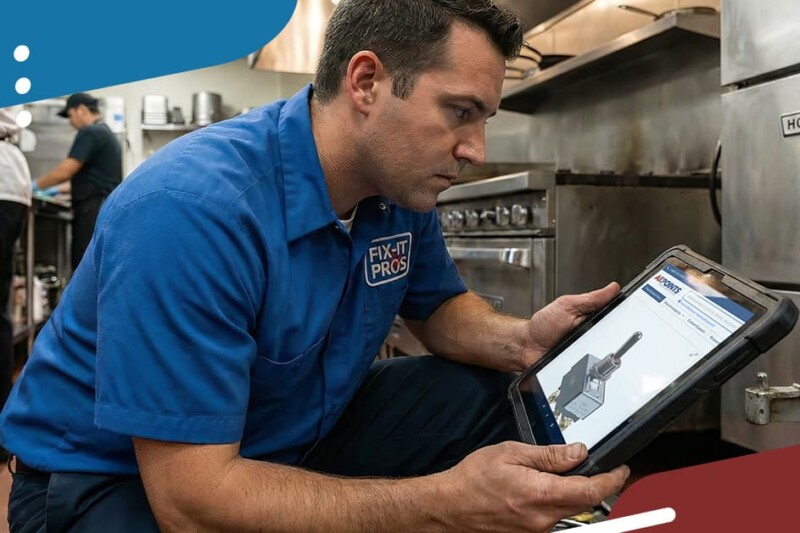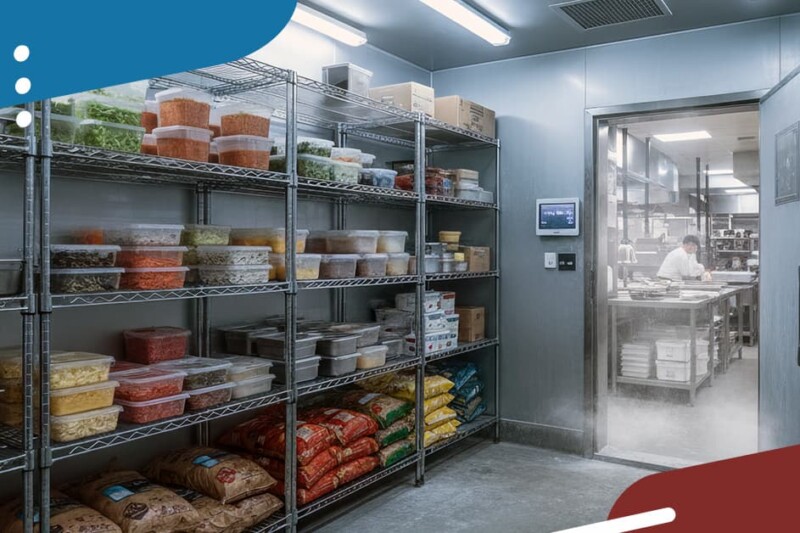The key to any good bar operation—aside from terrific service and high-quality beverages—is sparkling glassware. Just as you merchandise food on clean, attractive tableware, drinks are most appealing in the proper glassware that’s washed to crystal clarity.
You have a lot of options when it comes to getting your glassware clean, including hand washing them in a three-compartment sink. But assuming you hire bartenders for their customer-service and mixology skills, making them spend the greater portion of a shift washing glasses may not be the best use of their time if you’re doing any kind of substantial volume.
Despite the wide range of makes and models of glass washers available, your basic choice comes down to high-temp vs. low-temp and batch vs. continuous. By evaluating the pros and cons of each and weighing them against your own bar layout, menu and clientele, you’ll get a good idea of which machines likely will work best for your operation.
Rotary And Cycle Clubs
High-volume bars sometimes choose to specify rotary glass washers (continuous) rather than a door-style machine (batches by rack). Rotary glass washers use a revolving circular carousel to carry glasses from the open, loading side through a wash spray, rinse and final sanitizing spray before coming full circle to be unloaded. Interior curtains separate the wash, rinse and sanitizing chambers.
Because the carousel rotates continuously, there’s little waiting for clean glasses. Typically, these machines can wash about 1,200-1,400 glasses per hour. Many users like the fact that ergonomically, loading and unloading glasses onto the open carousel is easy. And with no door clearance to worry about, these units fit in tight spaces.
The big drawback of these units is that they can’t retain heat well because of their open design, so they use low-temp chemical sanitizers. We’ll get into why that can be a shortcoming in a minute.
Another option for high-volume bars is undercounter cycle-type glass washers, which wash a rack of glasses in timed cycles. Employees load the rack, place the rack in the machine, close the door and run the cycle. Cycles last anywhere from 90 seconds to three minutes, and while capacities can rival those of rotary glass washers, bar staff obviously has to wait until the cycle finishes to unload the machine.
Manufacturers build cycle-type undercounter washers in both low- and high-temp versions, so choices are abundant. One key advantage of this type of machine is that it’s not limited to glass washing. Like your dishwasher at home, you can load tableware, barware and even flatware and serving utensils in these machines if you purchase the appropriate racks.
Clearance is less of an issue today than it was years ago, as several models are available with doors that only extend 12 in. when they’re pulled open. If you’d like to be able to wash two types of glassware, such as wine and rocks, most models now accommodate 10-in. x 20-in. half racks in addition to standard 20-in. x 20-in. racks. (Generic racks will fit virtually all machines, but make sure you have the right racks for the glassware—and dishes or barware—you use.)
Running Hot And Cold
Low-temp glass washers (and dishmachines) grew popular back in the ’80s when energy costs began soaring. At the time, using a chemical to sanitize wares instead of rinse water boosted electrically to 180°F made economical sense.
Over the years, however, water costs as well as energy costs have come into play for most of you. With the introduction of the Energy Star Version 2.0 specification for dishmachines, manufacturers have introduced high-temp machines that are much more efficient in water and energy consumption than they used to be and often are not much more costly to operate than low-temp machines. Both high- and low-temp machines have pluses and minuses behind the bar that will likely factor into your decision.
Because low-temp machines use chemical agents that allow you to sanitize glassware in water temperatures as low as 75°F, the biggest advantage of using them behind the bar is the fact that the glassware is cool at the end of the cycle. And the relatively cool final rinse means that steam won’t escape into the bar area when you open the door.
Because there’s no need for a booster heater on low-temp machines, the tank heaters on these units that raise wash water to 140°F-160°F don’t require the heavy-duty electrical service of high-temp machines. That makes low-temp washers good candidates for bars with only 120V/20-amp service. Islands bars, for example, are ideal candidates for low-temp or rotary glass washers as they are difficult to resupply from the kitchen—bussers would need to haul racks through the dining and/or bar area—and islands are less likely to have 240V service.
However, the chemical sanitizers—sodium hypochlorite (liquid chlorine) or iodophor (iodine solution)—and the rinse aids used in low-temp machines can affect beverages’ taste, odor and carbonation. Chlorine also is damaging to metals such as silver, aluminum and pewter, so you shouldn’t use low-temp machines for flatware, specialty cups (like those used for Moscow Mules) or metal bar tools.
While metering systems are designed to inject the proper amount of detergent, rinse aid and sanitizing solution in these low-temp machines, heavily soiled wash water, for example, can affect the performance of each additive. And although rinse aids help prevent spotting, glasses come out of the machine wet and should air-dry before their next use.
Many operators prefer high-temp machines with their 180°F sanitizing rinse for a couple of reasons. First, they do an excellent job of cleaning, even getting rid of hard-to-remove soils such as sugar and lipstick (which cosmetics companies design to stay on). Second, the 180°F heat of the final sanitizing rinse means glasses will flash-dry when removed from the washer, eliminating spotting and lengthy drying time. Finally, sanitation is ensured without chemicals.
The main drawbacks of high-temp machines are that hot glasses need time to cool down and, in most models, steam releases when the door is opened after a cycle. (Although it’s rare, some jurisdictions would require a condensate hood overhead!)
To eliminate steam in the bar when opening a high-temp machine, at least two manufacturers have introduced models with heat-recovery systems that condense the steam with a heat exchanger. The heat exchanger, in turn, preheats incoming water for the wash tank. These units are energy efficient and steamless.
If you decide that high-temp washing is the way you want to go, make sure you have enough stock and storage space to get you through the time a glassware load takes to cool down. You can cool glasses more quickly by spraying them with cold water from the sink or soda gun. Unless your water is very hard, this practice shouldn’t lead to spotting. While cooling them this way negates the benefit of flash-drying after a 180°F final rinse, there may be times when getting glasses back into service is more important. Alternately, you can put glasses in a cooler; it takes little time for glass to lose heat.
Setting Them Up
There are ways around some of these pitfalls. One way to remove the heat and noise is to install your glass washers in a bussing station. Given enough landing space to cool and dry glasses and/or racks, employees can use the bus station to replenish the bar.
You’ll need plenty of landing space behind the bar, too, if that’s where you put your glass washer. Some models feature a drainboard top on which bar staff can set glasses or racks to dry (or cool), but you likely will want to fabricate some undercounter drainboards next to your glass washer as a landing area for racks and/or extra glass storage.
Whether rotary or cycle (high- or low-temp), install glass washers next to a sink. You then can tie into an existing drain, and bartenders can use a strainer basket in the sink for dumping leftover glass contents, such as ice and garnishes, before loading the glass into the washer. Some manufacturers make optional dump baskets and drain trays that attach to their washers.
To help eliminate the odor and taste that chemical sanitizers can leave behind as well as their effect on carbonated beverages, NSF Int’l. now allows you to rinse glasses with potable water once they’ve been sanitized. At least one manufacturer makes a low-temp model that rinses automatically at the end of each cycle.
What To Look For
Each type of glass washer has certain features you should look for when setting specs. Following are just a few:
Rotary glass washers
• Clearance to fit 12-in.H glassware
• Three-pump dispensing system for detergent, rinse aid and sanitizer
• Upper and lower wash arms, removable for easy cleaning
• Double-walled construction to reduce noise
• Low-water wash-tank shutoff to protect pump and heating element
• Adjustable rinse temperature for warm- or cold-water sanitizing rinse
Cycle machines
• Removable wash/rinse arms with clogged-wash-arm sensor
• Adjustable cycle selection
• Automatic self-cleaning/deliming cycles
• Removable primary stainless scrap screen (located above the wash-water line) and self-flushing secondary filter screen
• Auto pumps for detergent and rinse aid (high-temp and low-temp) and sanitizing solution (low-temp)
• Soft-start wash pump to reduce glass breakage
• Temperature interlock to ensure 180°F final sanitizing rinse in high-temp machines
• Low-chemical alert sensors (high-temp and low-temp)
• Energy Star 2.0 rated
No matter which style of machine you purchase, installing a glass washer gets your bartenders off dish-duty and puts them back to work making and selling drinks.
Sidebar:
Old Faithful
The champ and still king of glass washers behind the bar is a brush washer in a three-compartment sink.
Thousands of bars use the electric version, which comes in two models—upright and submersible. Made by a few manufacturers, these glass washers are relatively inexpensive (at a street price ranging from about $275-$500).
They typically have a 1/3-hp motor that rotates five vertically mounted brushes, and sit in a sink of water with detergent. Bartenders invert empty glasses onto the middle brush, which cleans the inside of the glass, while the other brushes clean the outside of the glass.
In a three-compartment sink, you fill the second sink with rinse water and the third sink with clean water and sanitizing solution. Some localities permit you to wash in a two-compartment sink, with the second sink containing a sanitizing rinse.
When used properly, these glass washers will even remove lipstick, and depending on how dirty your glasses are, bartenders can wash several hundred per hour—not quite as fast as other alternatives here, but adequate for many bars.
The usual caveats regarding low-temp washing apply—the chemical sanitizing solution must be checked often and can leave an off odor and taste in glasses; washed and rinsed glasses finish up wet and must be air-dried on a drain board; and bartenders need to pay close attention to heavily soiled glasses (e.g., lipstick and sugary drinks).
Bartenders need to be cautioned against loading three or four glasses at a time onto the brushes to handle heavy volumes (one in the center and three or four more on the outer brushes). Washed in that way, glasses won’t get clean and run the risk of breaking against each other and into the sink.
Glass-Washer Manufacturers
Admiral Craft
admiralcraft.com
American Dish Service
americandish.com
Bar Maid
barmaidwashers.com
Blakeslee/The Legacy Cos.
blakesleeinc.com
Champion/Ali Group
championindustries.com
Ecolab
ecolab.com
Electrolux
electrolux.com
Fagor Commercial
fagorcommercial.com
Glastender
glastender.com
Hamilton Beach
commercial.hamiltonbeach.com
Hobart/ITW FEG
hobartcorp.com
Insinger Machine Co.
insingermachine.com
Jackson/Hoshizaki
jacksonwws.com
Jet-Tech
mvpgroupcorp.com
MEIKO
meiko.us
Micro Matic
micromatic.com
Perlick
perlick.com
Stero/ITW FEG
stero.com
RELATED CONTENT
- Advertisement -
- Advertisement -
- Advertisement -
TRENDING NOW
- Advertisement -
- Advertisement -
- Advertisement -


